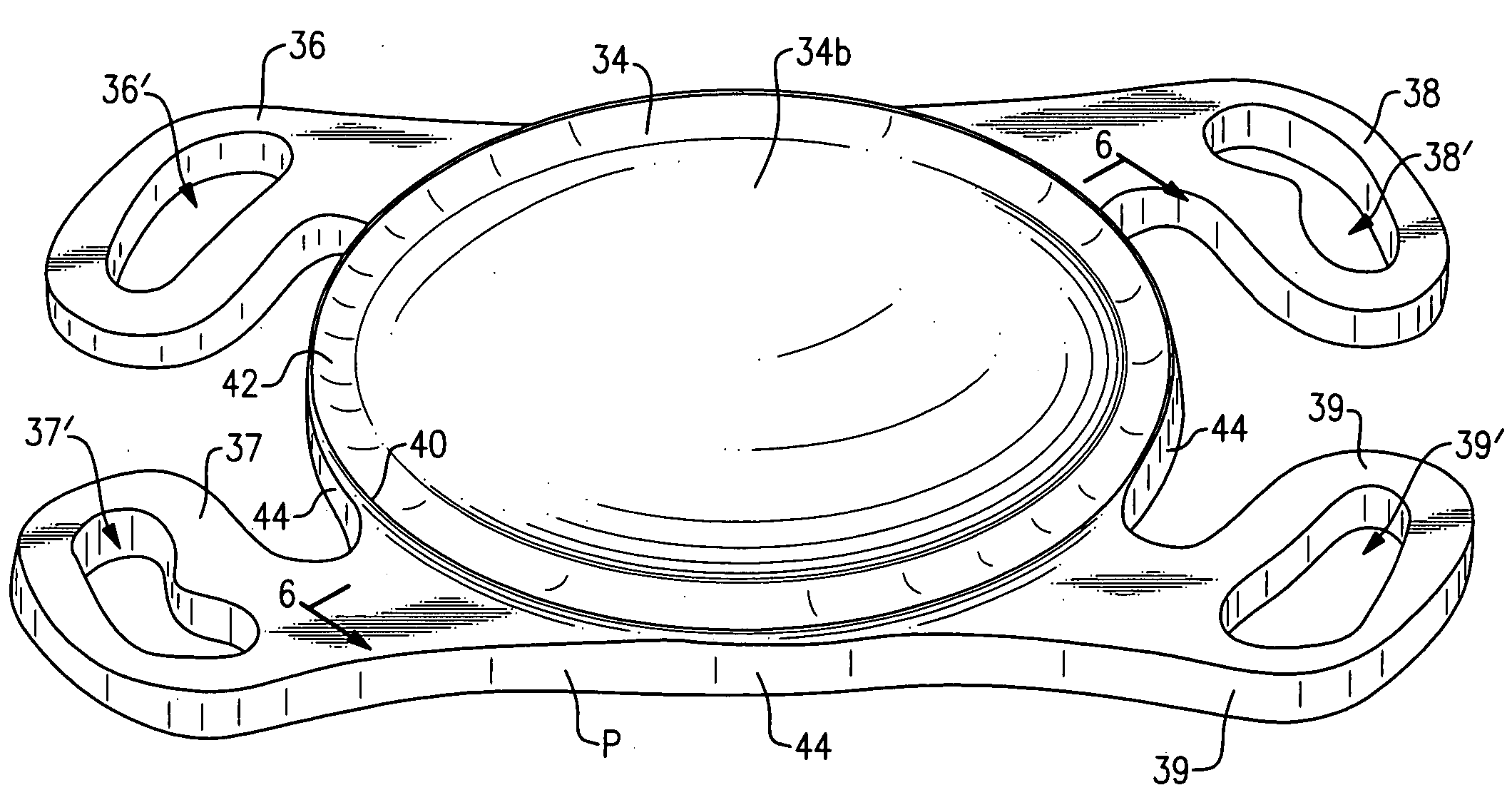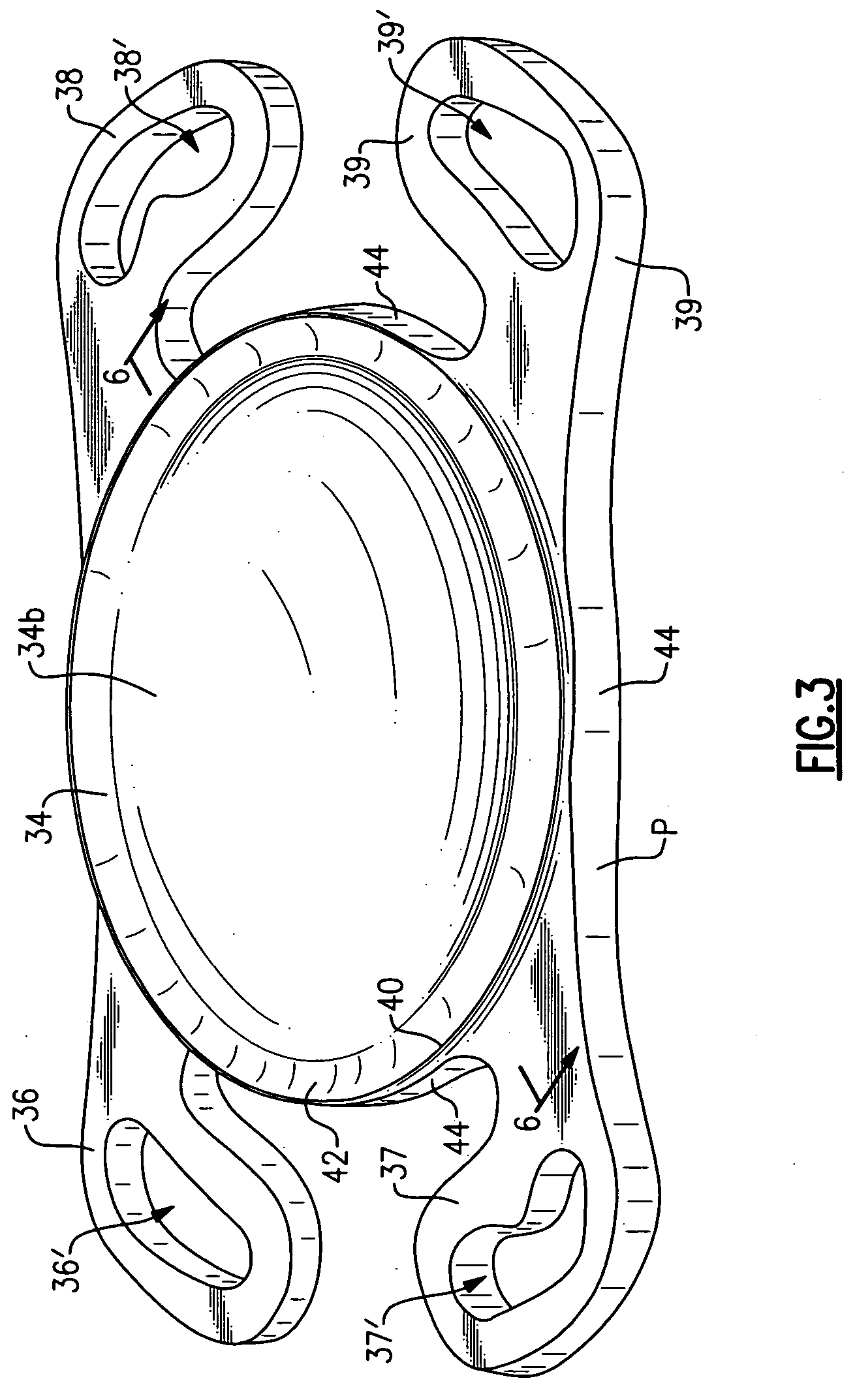Small incision intraocular lens with anti-PCO feature
a small incision, intraocular lens technology, applied in the field of intraocular lenses, can solve the problems of unfavorable capsulotomy complications, serious, sight-threatening complications, and difficulty in putting such a method into clinical practice, and achieve the effects of reducing the overall dimension of the optics, maintaining the strength and and increasing the in-situ stability of the iol
- Summary
- Abstract
- Description
- Claims
- Application Information
AI Technical Summary
Benefits of technology
Problems solved by technology
Method used
Image
Examples
Embodiment Construction
[0025] Referring now to the drawing, there is seen in FIG. 1 a cross-sectional view of a human eye 10 having an anterior chamber 12 and a posterior chamber 14 separated by the iris 30. Within the posterior chamber 14 is a capsule 16 which holds the eye's natural crystalline lens 17. Light enters the eye by passing through the cornea 18 to the crystalline lens 17 which act together to direct and focus the light upon the retina 20 located at the back of the eye. The retina connects to the optic nerve 22 which transmits the image received by the retina to the brain for interpretation of the image.
[0026] In an eye where the natural crystalline lens has been damaged (e.g., clouded by cataracts), the natural lens is no longer able to properly focus and direct incoming light to the retina and images become blurred. A well known surgical technique to remedy this situation involves removal of the damaged crystalline lens which may be replaced with an artificial lens known as an intraocular ...
PUM
 Login to View More
Login to View More Abstract
Description
Claims
Application Information
 Login to View More
Login to View More - R&D
- Intellectual Property
- Life Sciences
- Materials
- Tech Scout
- Unparalleled Data Quality
- Higher Quality Content
- 60% Fewer Hallucinations
Browse by: Latest US Patents, China's latest patents, Technical Efficacy Thesaurus, Application Domain, Technology Topic, Popular Technical Reports.
© 2025 PatSnap. All rights reserved.Legal|Privacy policy|Modern Slavery Act Transparency Statement|Sitemap|About US| Contact US: help@patsnap.com



